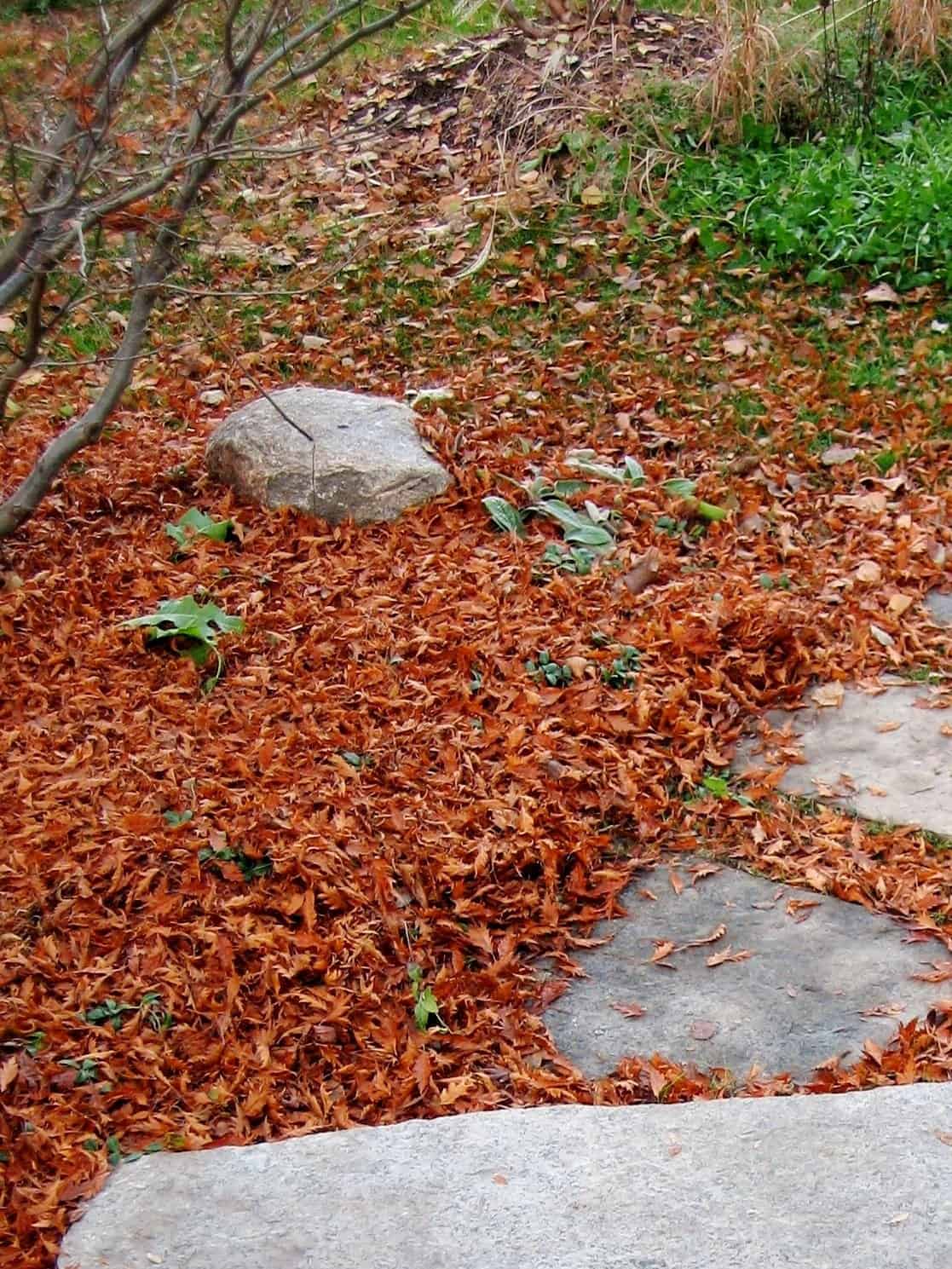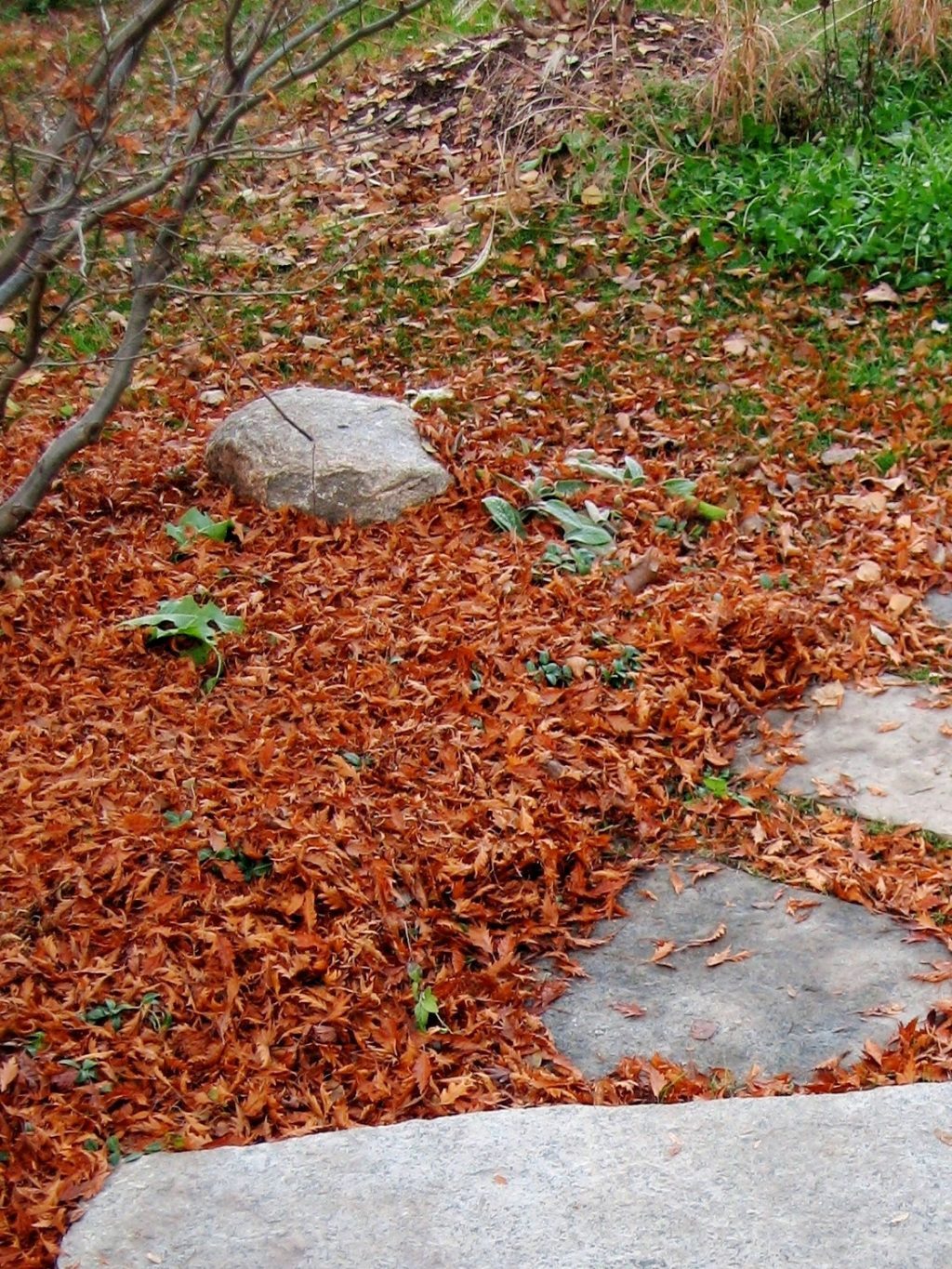
Nights are growing cool, a sign that the season is drawing to an end. Green leaves are fading and soon brilliant red, orange and yellow will be revealed. But the show is short, and leaves will soon fall to the ground. That’s our cue to start sweeping them into flowerbeds and compost piles, around the ankles of shrubs and across any exposed soil. The merits of a three- to four-inch (8- to 10-cm) blanket of leaf mulch on soil is a gardener’s autumn mission — to return nutrients to the soil, conserve moisture, promote healthy soil structure and prevent erosion.
I first began mulching soil with leaves, I would gather the fallen leaves from two Norway maples on my property. These big, broad leaves needed to be chopped or cut down in size so they would stay in place and not blow around. I would spread a thick layer of dry leaves on the driveway and pass over it several times with the power mower. The chopped leaves were then swept up and temporarily stored in bags, and another layer put down on the driveway. This long and messy process went on for most of a week, until the leaves and the gardener were exhausted. Then I purchased an electric leaf shredder that produced a lovely mulch material, but the process of feeding leaves into the shredder was even slower and noisier.
Eventually I figured out that it’s smarter to skip the leaf shredding step and grow trees with small leaves that are just the right size for mulching, such as serviceberry (Amelanchier canadensis, Zone 4) and crabapple (Malus spp. and cvs., Zone 4). I took down the Norway maples, and planted a river birch (Betula nigra, Zone 4), a fern-leaf beech (Fagus sylvatica ‘Asplenifolia’, Zone 5) and several red beech (F. sylvatica ‘Riversii’, Zone 5) in the front garden. These trees have leaves and stems just the right size to make an instant mulch; I sweep them directly into the perennial and shrub beds. In the back garden I have more beech and birch trees, maidenhair trees (Ginkgo biloba, Zone 5) and a ‘Shademaster’ honeylocust (Gleditsia triacanthos var. inermis ‘Shademaster’, Zone 5). The major load of leaves falls directly on the beds (no work!), and those that fall on the lawn are quickly swept back over exposed soil. This mulching system is working really well.
If you have an opportunity to plant trees that produce readymade mulch, choose those with small or compound leaves divided into leaflets, or deeply incised (like silver maple and several of the oaks). Lots of ornamental trees with compound leaves are available; for instance, consider Kentucky coffee tree (Gymnocladus dioicus, Zone 4) or European mountain ash (Sorbus aucuparia, Zone 4). Where there’s no room for new trees, you might plant large ornamental shrubs that produce quantities of small size foliage, like purpleosier willow (Salix purpurea, Zone 4), American elder (Sambucus canadensis, Zone 4), Vanhoutte spirea (Spiraea x vanhouttei, Zone 4) and staghorn sumac (Rhus typhina, Zone 5). All these plants produce useful leaf mulch, with no shredding required.
More by Judith Adam on Garden Making









